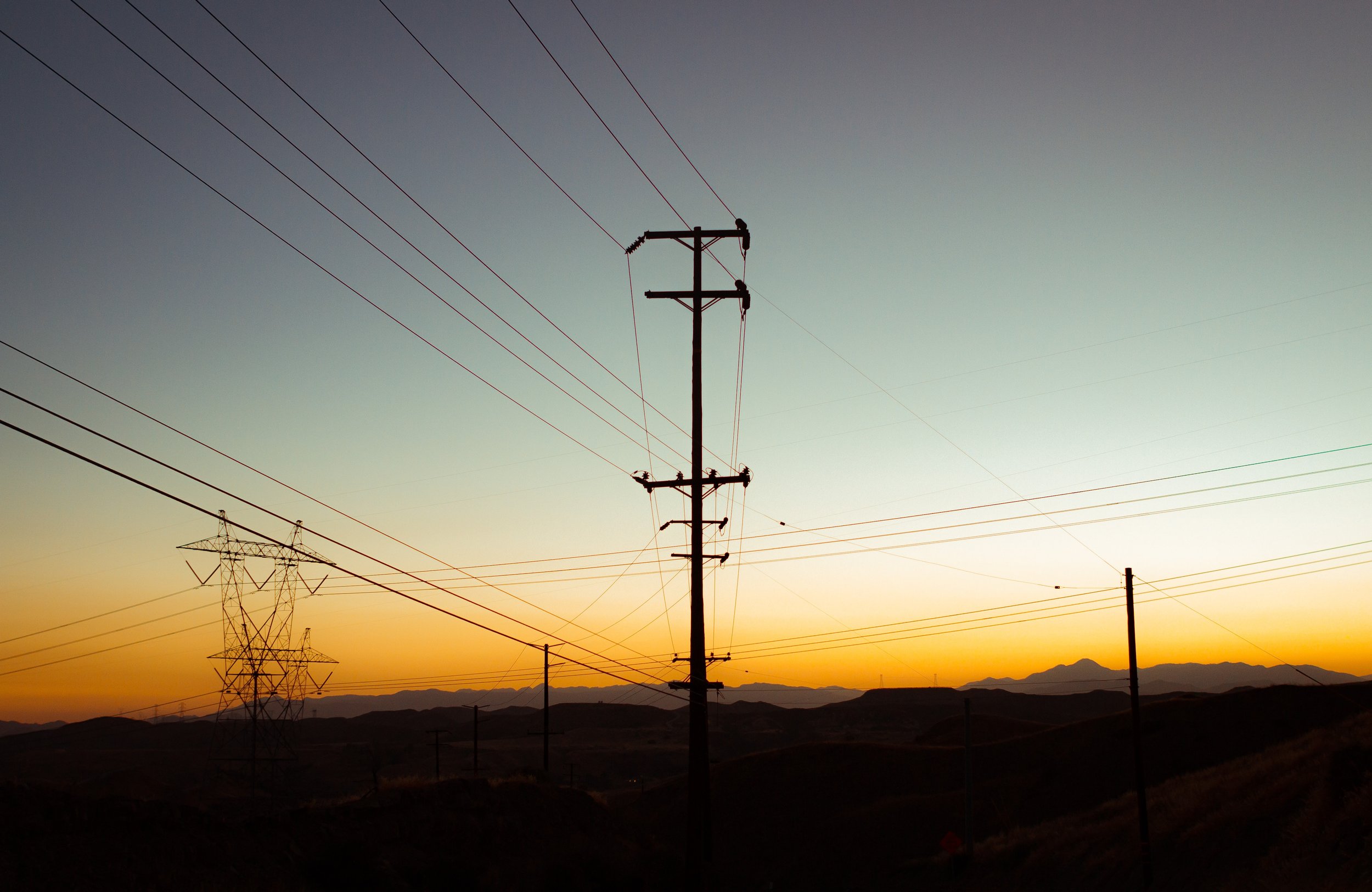Environment | Ten Across | Data Viz
How is L.A. doing on its quest toward 100% renewable energy?
To find out, we talked to Denis Obiang, director of power systems planning for the Los Angeles Department of Water and Power
Editor’s note: This article is part of a collaboration between APM Research Lab and the Ten Across initiative, housed at Arizona State University.
by RITHWIK KALALE | Dec. 13, 2023
In 2021, Los Angeles collaborated with the U.S. Department of Energy to produce the LA100 study, a plan to achieve a 100% renewable and carbon-free power grid for the city by 2045.
“We started with 33% in 2020... [and] today 45% of our power comes from renewable energy,” said Denis Obiang, director of power systems planning for the Los Angeles Department of Water and Power (LADWP).
The LADWP currently services power to over 1.5 million homes in the city of L.A., using approximately 15,000 miles (about 24,100 km) worth of power lines and cable.
Between 2020 and 2021, the average electricity consumption per service connection was 438 kilowatt-hours per month between all types of buildings. Business, industry and government agencies are the major energy-users, consuming about 59% of the electricity in Los Angeles even though residents make up about 90% of total customers.
Investing in transmission and distribution
There are three major steps required to bring electricity to buildings: generation, transmission and distribution.
Whether they are fueled by fossil fuels or more renewable sources, power plants generate the electricity that is delivered through transmission and distribution power lines. Transmission lines hang between tall metal towers and carry higher voltage electricity over long distances. Higher voltage electricity is more efficient and less expensive for long-distance electricity transmission. Transformers lower the voltage and then send the power to homes and businesses via distribution lines.
Developing adequate new means of transmission is an obstacle to scaling up renewable energy. With more electricity being generated in new places, new transmission lines need to be built.
“If you increase the amount of renewable energy, the next step is to come up with a delivery mechanism for the renewable energy to reach your destination. Transmission is the number one challenge for us because it takes about 12 to 15 years just to site and permit,” said Obiang.
To build new means of transmission and distribution, the LADWP needs investment, while at the same time ensuring that disadvantaged communities have the same access to renewable resources.
Providing power for disadvantaged communities
According to the U.S. Department of Energy’s National Renewable Energy Laboratory (NREL), the LADWP invested $340 million in residential solar installation, $14 million in residential energy efficiency and $5 million in residential electric vehicle incentive programs, between 1999 and 2022. However, disadvantaged communities, mostly located in the South Los Angeles, East Los Angeles, San Fernando Valley and Harbor areas, received less of those allocations.
Obiang says that rooftop solar panels largely went to wealthier people, as they were the ones who could afford to install it.
“Going forward we want to ensure that local access to green energy [and] EV charging is done in a way that is agnostic no matter what zip code you live in,” he said.
Offsetting climate disaster effects on the power grid
Renewable resources such as wind or solar work best in a consistently breezy and sunny climate. Climate change, however, has led to less predictable weather patterns. Warmer weather also generally leads to a higher energy use for cooling, increasing the chance of blackouts or other power disruptions according to the Environmental Protection Agency. Additionally, climate change has resulted in more risk for wildfires, especially in California, which have a direct impact on the power grid.
“Wildfires have a lot of impact on our transmission assets. With the 2019 wildfires, three out of five of our major core transmission systems were affected. We were lucky that it wasn't summer, otherwise we would have had a potential outage in the city of Los Angeles,” said Obiang.
He went on to say that diversifying resources and building more transmission delivery lines can help offset some of the damage that climate events can cause to power supply.
“If wildfires take down some of the lines or de-energize some of the lines, we can reroute to ensure the service centers can get power. We are also diversifying our resources so that we have a variety of power coming in from different geographic areas.”
The impact of electric vehicles
According to Obiang, load growth, or a higher demand for energy in general, is the main challenge in switching completely to renewable resources. But the increase in demand is not necessarily coming from an increase in the city’s population.
“The state is asking us to take over what the gas companies used to provide. [For cars,] it's shifted to [the] electric utility to provide the energy electrically, so that increased the load level.”
The increase in Angelenos opting for electric cars over gas vehicles means there is more demand for electricity. Since the city is trying to prioritize sourcing renewables, the LADWP is feeling the pressure to increase renewable energy levels to meet that demand.
The current distribution system for Los Angeles is also not sustainable for the future, according to Obiang.
“The adoption rate [of EVs] is growing so exponentially high that we have to act fast.”
Obiang says that the LADWP’s primary goal moving forward is to focus on equity strategies and educating people on using energy-friendly appliances and retrofitting to reduce consumption and keep prices low.

